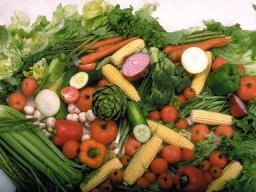Depending on the direct source of food, all foods are classified in two groups such as
1) Plant sources : Vegetarian food :
These can again be subclassified as
A. Grains:
This class of food includes foods derived from cereal crops such as
Wheat, Rices, Maize, Jawar( white millet/ sorghum) Bajra ( pearl millet), Barley, Rye, Oat, Fonio( Africa), Quinoa ( grown in Andes)
Grains supply food energy in the form of starch and also some proteins.
Whole grains also supply fiber and essential fatty acids and other necessary nutrients
B Pulses: ( legume)
This class of food include the dry grains whidch are obtained from the pods of the leguminous crops.Each pod may contain one to twelve grains or seeds of variable size, shape and color within the pod.
This includes dry beans ( kidney beans, green gram,black gram, moth bean, lima bean, rice bean, scarlet bean), Dry broad beans ( broad bean, horse bean, field bean), Dry peas ( garden peas), Cheakpea( bengal gram / chana), cowpea ( chavali), pigeon pea( arhar/ doovar), lentil( masoor), Vetch, lupins, winged bean, velvet beans.
Legumes / pulses are rich source of proteins.
C Fruits :
In botanical term friut is a ripened ovary together with the seeds of a flowering plant. If this defination is applied then many grains, vegetables, & nuts are fruits.
But when discussing the fruit as food group , it usually refers to those commonly eaten plant fruits that are sweet, fleshy such as, apples, orages, sweet lime, plum, guava, pineapple, fig, mulberry, osage-orange, and breadfruit. banana, grapes, grapefruit, , peach, pear, kiwifruit, mango, watermelons etc.
Fruits are rich source of fiber and vitamins. .
D Vegetables :
Vegetable is also a culinery term describing the edible part of the plant which is not sweet and can be subgrouped as .
and can be subgrouped as .
(i)Fruit Vegetables : Botanical fruits of some plants are not sweet but they are eaten after cooking and termed as fruits vegetables.
Examples : pumpkin, capsicum,cucumber, eggplant, tomato, gourd, white gourd,
(ii)Leafy Vegetables :
Leafy vegetables as suggested are the plants leaves which are eaten as vegetables. They are also called as green vegetables or pot herbs. Leaves also are eaten with tender petioles and shoots.
There are nearly thousand species of plants with edible leaves. Leafy vegetables usually are short herbaceous plant such as lettuce and spinach, Kale, Celery etc.
E. Liquids: such as tea, coffee, coco, etc
F. Oils: Vegetable oils
G. Processed food: such as Tofu made from Soya milk.
H. Miscellaneous : Nuts, Dry fruits and spices.










